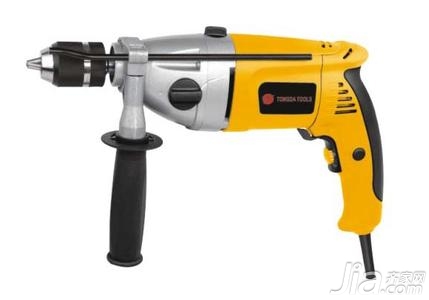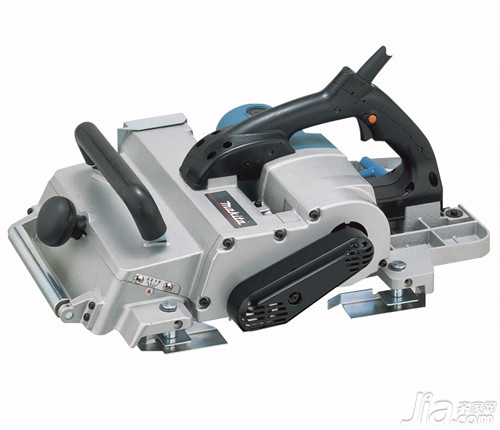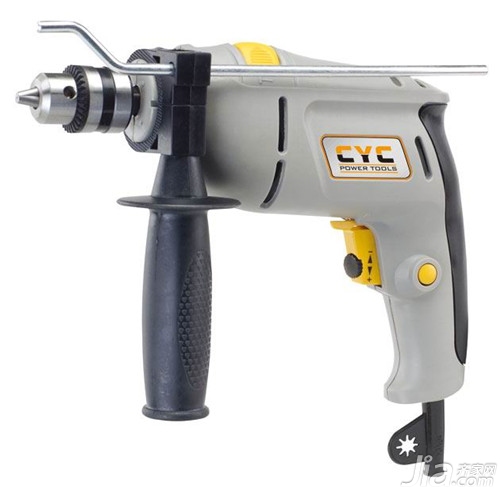Portable power tools, a wide range of applications. Hand-held power tools have high mobility and vibration and are prone to leakage and other faults. Since such tools are often used in tight grips, the risk of electric shock is even greater. Therefore, special attention should be given to management, use, inspection, and maintenance. Let's take a look at the safety regulations for hand-held power tools .

First, the tools of electric shock protection measures "handheld power tools management, use inspection and maintenance safety technical regulations" (GB3787-93), the hand-held electric tools according to the different measures of electric shock protection is divided into three categories:
Class I tools: Prevent electrical shock by relying on basic insulation plus protective zero (ground);
Class II tools: Double insulation or reinforced insulation to prevent electric shock;
Class III tools: Uses safe extra-low voltages and does not generate voltages higher than the safety extra-low voltage inside the tool to prevent electric shocks.
Second, according to the reasonable choice of the environment
In general places, Class II tools should be used; good double insulation or external insulation of the tool body is a safe and reliable measure to prevent electric shock. If a Class I tool is used, it must be powered by an earth leakage protector or a safety isolating transformer; otherwise, the user must wear insulated gloves or stand on an insulating mat.
Work in wet locations or metal structures should use Type II or Type III tools. If a Class I tool is used, a leakage protector with a rated operating current of not more than 30 mA and an operating time of not more than 0.1 s must be installed.
The use of Class III tools should be used in narrow places (such as boilers, metal containers). If a Class II tool is used, a leakage protector with a rated leakage current of not more than 15 mA and an operating time of not more than 0.1 s must be installed. And the safety isolation transformer of class III tools, control box, power connector, etc. and leakage protector of class II tools must be placed on the outside, and special personnel should be supervised. It is forbidden to use Class I tools in such places.
In special environments such as hot and humid, rain and snow, explosive or corrosive gas, handheld power tools used must also meet the special safety requirements of the respective environment.

III. Protection of Class I Tools
As already mentioned, Class I tools rely on basic insulation plus protective zero (ground) to prevent electric shock. With a Class I tool with zero protection, the protection neutral line should be separated from the working neutral line, ie the protection neutral line should be connected to the repeated grounding of the grid separately. For zero-reliability, it is best to use a copper-core rubber sheathed flexible cable with a zero-core conductor as the power cord, and its dedicated core is used as the neutral conductor. The protection of the zero line should use a copper wire with a cross-sectional area of ​​not less than 1.5mm2. Power sockets and plugs used in the tool shall have dedicated zero-connected jacks and plugs, and shall not be plugged in uninterruptedly to prevent electric shocks from being caused by inserting the neutral conductor into the phase conductor.
It should be pointed out that even though protective zero-crossing measures have been taken, hand-held power tools may still be at risk of electric shock. This is because the single-phase line is widely distributed, and the phase line and the neutral line are easily confused. At this time, fuses are usually installed on the phase line and the neutral line, and the zero line fuse is blown, while the phase line insurance has not yet been blown, it may cause The enclosure of the device presents a voltage to the ground in order to cause an electric shock accident. Therefore, this zero connection cannot guarantee security, and other safety measures are still required.
IV. Use and Storage
1. Hand-held power tools must have personnel management, regular maintenance and a sound management system.
2. Perform visual inspection and electrical inspection before each use.
Visual inspection includes:
(1) Whether the shell or handle is cracked or broken, and whether the fasteners are complete and effective;
(2) Whether the flexible cable or flexible wire is intact, whether the protection connection (ground) is correct and firm, and whether the plug is intact;
(3) Is the switch action normal, flexible, and in good condition;
(4) The electrical protection device and the mechanical protection device are in good condition;
(5) Whether the rotating part of the tool is flexible and unobstructed, and the clamping head is firm.
Electrical inspection includes:
(1) The reaction is normal after power on, and the switch control is effective;
(2) After the electricity is energized, the outer shell shall be checked by a test pencil.
(3) The signal is correct and the automatic control function is normal;
(4) For rotating tools, observe brush sparks and sounds after power up should be normal.

3, hand-held power tools should be installed in the use of a separate power switch and protection device. The power cord must use copper core multi-strand rubber sheathed cables or PVC sheathed cables; the cables should avoid heat sources and should not be pulled to the ground.
4, the power switch or latch should be intact, it is strictly prohibited to insert the wire core directly into the socket or hook on the switch. In particular, prevent the alignment of the live line with the neutral line.
5. Operate hand tools such as hand drills or rotary hammers, and do not wear gloves with wires. It is also not possible to hold the rotating parts or wires of the tool by hand, and to prevent the wires from being twisted during the use.
6. After the hand-held power tool is used, the power must be turned off at the power supply side.
7. When using hand-held power tools at high altitude, special escalators should be provided below, and the power can be quickly cut off in case of electric shock.
Fifth, maintenance
Hand-held power tools should be overhauled by full-time personnel. The repaired tools should not reduce the original protective performance. The original insulation gaskets and bushings inside the tool must not be removed or replaced. The insulation resistance of the tool after repair is tested with a 500V megohmmeter, class I is not less than 2MΩ, class II is not less than 7MΩ, class III is not less than 1MΩ. After the overhaul, the tools should also be subjected to AC voltage withstand tests. The test voltage standards are: Class I - 950V, Class II - 2800V, Class III - 380V.
The above is a brief introduction to the safety regulations for hand-held power tools . We hope to help you. For more information, please visit this website. Stay tuned.
Power Tools Brand Power Tools
Carbide Punch Pin,Carbide Core Pins,Tungsten Carbide Center Punch,Custom Carbide Pins
Chongqing Henghui Precision Mold Co., Ltd , https://www.citool.com